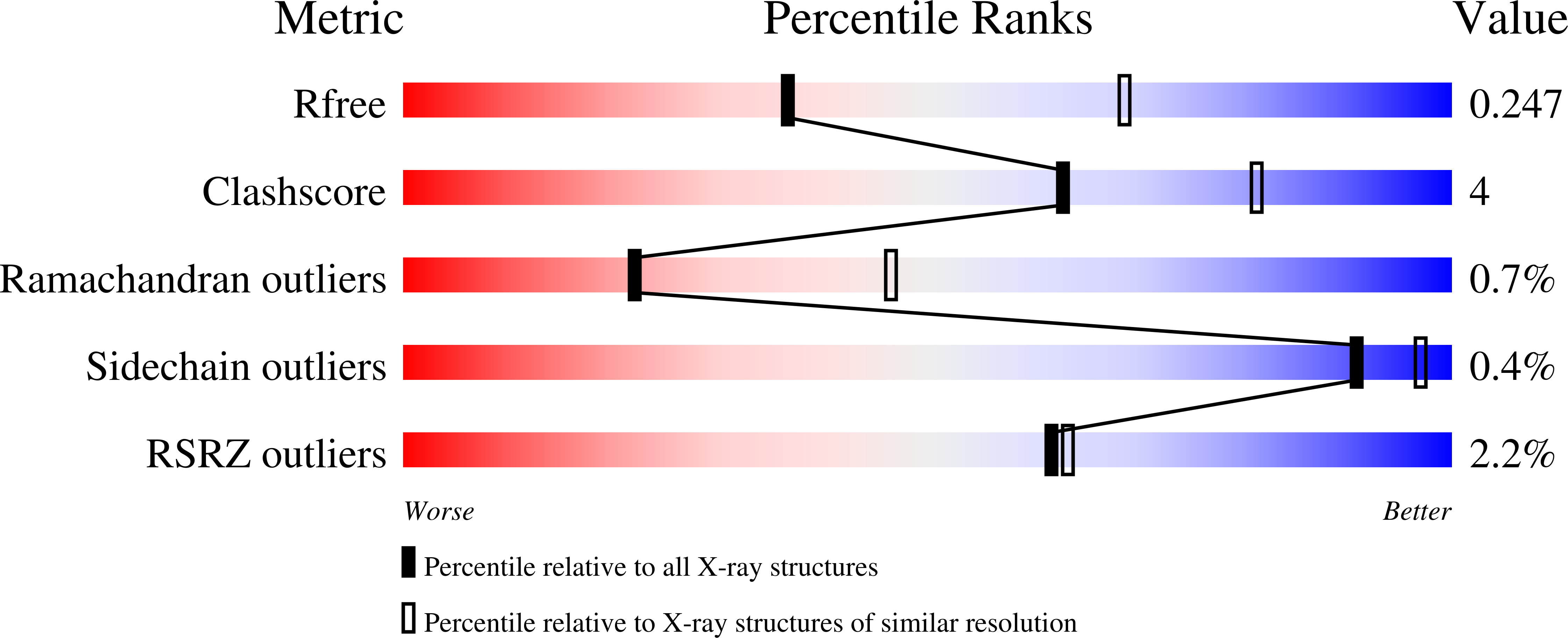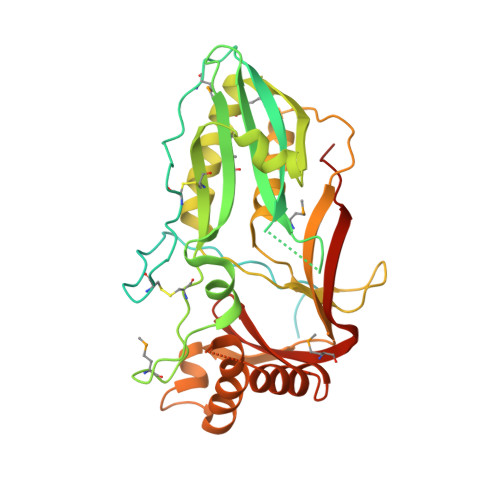Cln5 represents a new type of cysteine-based S -depalmitoylase linked to neurodegeneration.
Luebben, A.V., Bender, D., Becker, S., Crowther, L.M., Erven, I., Hofmann, K., Soding, J., Klemp, H., Bellotti, C., Stauble, A., Qiu, T., Kathayat, R.S., Dickinson, B.C., Gartner, J., Sheldrick, G.M., Kratzner, R., Steinfeld, R.(2022) Sci Adv 8: eabj8633-eabj8633
- PubMed: 35427157
- DOI: https://doi.org/10.1126/sciadv.abj8633
- Primary Citation of Related Structures:
6R99 - PubMed Abstract:
Genetic CLN5 variants are associated with childhood neurodegeneration and Alzheimer's disease; however, the molecular function of ceroid lipofuscinosis neuronal protein 5 (Cln5) is unknown. We solved the Cln5 crystal structure and identified a region homologous to the catalytic domain of members of the N1pC/P60 superfamily of papain-like enzymes. However, we observed no protease activity for Cln5; and instead, we discovered that Cln5 and structurally related PPPDE1 and PPPDE2 have efficient cysteine palmitoyl thioesterase ( S -depalmitoylation) activity using fluorescent substrates. Mutational analysis revealed that the predicted catalytic residues histidine-166 and cysteine-280 are critical for Cln5 thioesterase activity, uncovering a new cysteine-based catalytic mechanism for S -depalmitoylation enzymes. Last, we found that Cln5-deficient neuronal progenitor cells showed reduced thioesterase activity, confirming live cell function of Cln5 in setting S -depalmitoylation levels. Our results provide new insight into the function of Cln5, emphasize the importance of S -depalmitoylation in neuronal homeostasis, and disclose a new, unexpected enzymatic function for the N1pC/P60 superfamily of proteins.
Organizational Affiliation:
Institute of Inorganic Chemistry, University of Göttingen, Tammannstrasse 4, 37077 Göttingen, Germany.


















